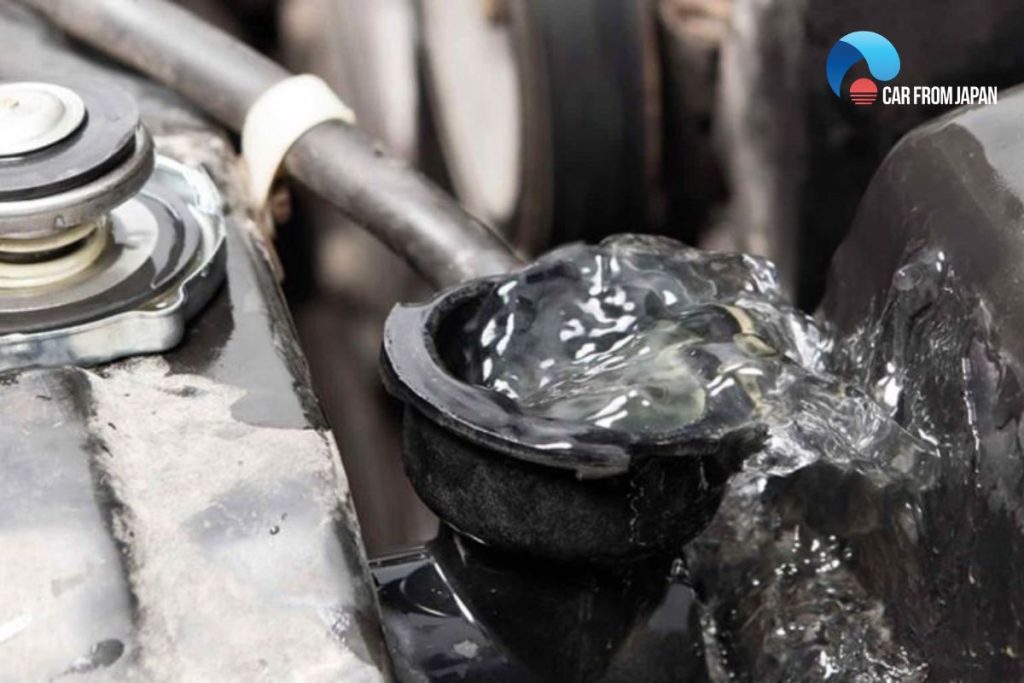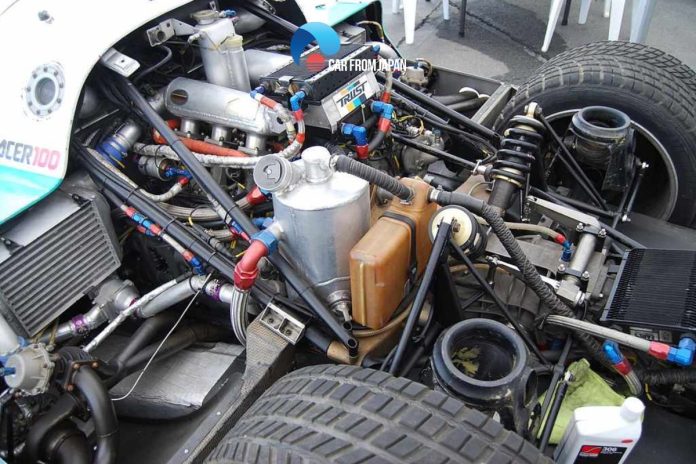Flushing is the most sought-after method of removing all types of contamination from the radiator. You can clean it too by flushing radiator with vinegar.
No matter how good you are with the maintenance, some of its parts, such as the radiator, will not work efficiently over time. A clogged radiator is a problem that often affects a vital part of the engine’s cooling system.
Contents
- What Are The Signs of A Radiator Needs Flushing?
- How Does Flushing Clean the Radiator?
- The Process of Flushing Radiator with Vinegar
- FAQs on Flushing Radiator with Vinegar
- How often should I flush my radiator with vinegar?
- What type of vinegar should I use for radiator flushing?
- How do I flush my radiator with vinegar safely?
- Are there any risks associated with flushing a radiator with vinegar?
- Will flushing my radiator with vinegar void my vehicle’s warranty?
- Can vinegar eliminate all radiator-related problems, such as overheating?
- Conclusion
What Are The Signs of A Radiator Needs Flushing?
If you are getting any of these symptoms, it is time to flush the car radiator and clean it.
Overheating
One of the most common signs that your radiator needs a flush is engine overheating. While several factors can contribute to overheating, a clogged radiator significantly reduces its ability to dissipate heat effectively.
The buildup of rust, scale, and debris restricts coolant flow, preventing the radiator from properly cooling the engine.
If your engine regularly overheats, especially in normal driving conditions, a radiator flush might be necessary to restore proper cooling performance.
Leakage
If there is a sign of coolant leakage under the car, the radiator needs flushing.
While leaks can stem from various sources, a clogged radiator can sometimes contribute to increased pressure within the cooling system, exacerbating existing leaks or even causing new ones.
If you notice coolant puddles or a consistently low coolant level, it’s crucial to inspect the entire cooling system, including the radiator, for leaks and potential blockages
Noise
Just like overheating, engine noise can occur due to many reasons
While engine noise can have various causes, a knocking sound, especially when accompanied by overheating, might indicate a problem within the cooling system, potentially related to a clogged radiator.
The restricted coolant flow caused by a clogged radiator can create air pockets and uneven temperature distribution, contributing to these noises.
A thorough inspection of the cooling system is necessary to determine the exact source of the noise and implement the appropriate solution.

How Does Flushing Clean the Radiator?
Over time, radiator coolant builds up unwanted contaminants and debris. It also causes corrosion, rust, and scaling in the radiator.
A coolant flush can fix all these problems, maintaining the health and efficiency of your vehicle’s cooling system.
During this process, several gallons of cleaner, water, and new antifreeze pass through the system and remove the old antifreeze and existing contaminants. Besides, flushing lubricates the water pump and lengthens its life.
As for frequency, in the first year, the car does not need flushing if it runs less than 10,000 miles. With no signs of a faulty radiator, you can flush it after every 30,000 miles or as per the manufacturer’s recommendation.
Regular flushing, combined with routine inspections, helps prevent major cooling system problems and maintains optimal engine temperature, contributing to the overall longevity of your car.
The Process of Flushing Radiator with Vinegar
You can use various natural and chemical solutions to clean or flush the radiator. Before starting the process, don’t forget to wear rubber gloves and safety glasses.
Let’s learn the stepwise method to flush the radiator with vinegar.
- First of all, put a shallow pan on the ground beneath the radiator so that it can catch the draining coolant. Since each country has specific regulations about the proper disposal of coolant, it is better not to let the coolant soak into the ground.
- Now, move the radiator cap and loosen the drain valve of the radiator. The coolant will drain into the pan.
- When the radiator is empty, put water to fill half of it. Add one gallon of white distilled vinegar. Finally, fill the remaining part of the radiator with water.
- Close the radiator cap before starting the car. Run the car for some time until it reaches room temperature.
- Leave the car overnight. Then, remove the radiator drain valve to drain all the content of the radiator. During the draining process, flush out the radiator using a hose.
- Once the flushing is complete, put the proper mixture of coolant and water in the radiator to fill it.

See More: Troubleshooting Car Radiator Fan Problems
FAQs on Flushing Radiator with Vinegar
How often should I flush my radiator with vinegar?
It’s recommended to perform a vinegar flush every 2 to 5 years, deending on your vehicle’s age and usage.
What type of vinegar should I use for radiator flushing?
White distilled vinegar is the most commonly used type for radiator flushing due to its mild acidity and effective scale-dissolving properties.
How do I flush my radiator with vinegar safely?
The process typically involves draining the coolant, adding a vinegar-water solution, running the engine to circulate it, and then flushing it out with clean water.
Are there any risks associated with flushing a radiator with vinegar?
While vinegar is generally safe, improper flushing or leaving vinegar residue can lead to cooling system issues.
Will flushing my radiator with vinegar void my vehicle’s warranty?
A vinegar flush should not void your warranty if performed correctly.
However, you should check your warranty terms and consult your vehicle manufacturer if you have concerns.
While vinegar can help prevent overheating caused by mineral deposits, it may not address all radiator issues.
Regular maintenance and diagnosis of specific problems are still necessary.
Check out this video from Auto V Fix to learn how to flush a clogged radiator!
Conclusion
A clogged car radiator can create issues like overheating. You can choose to unclog it with the flushing method. Instead of using harsh solutions, flushing radiator with vinegar is a safer choice.
For more insightful Car maintenance tips, follow Car From Japan today!



